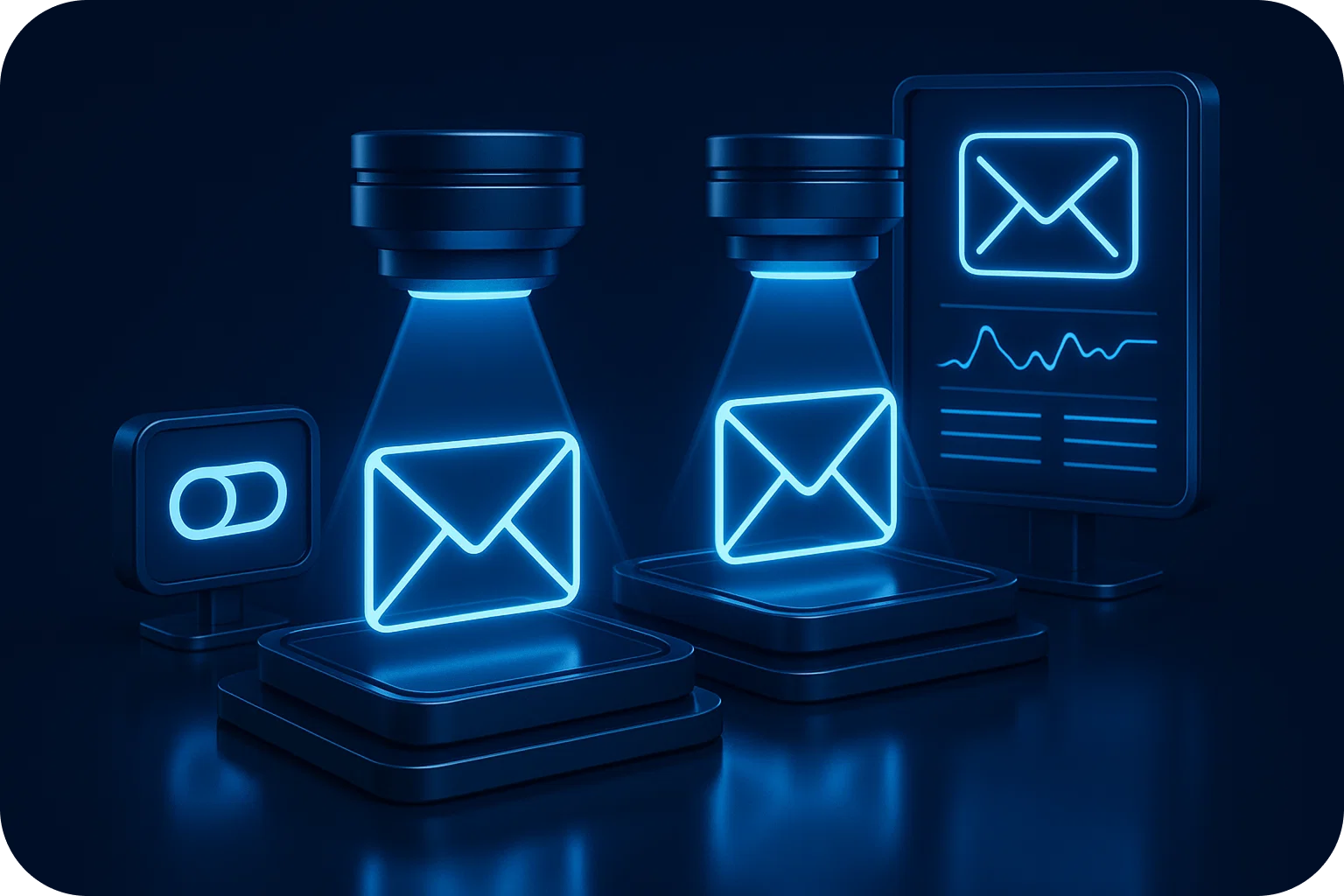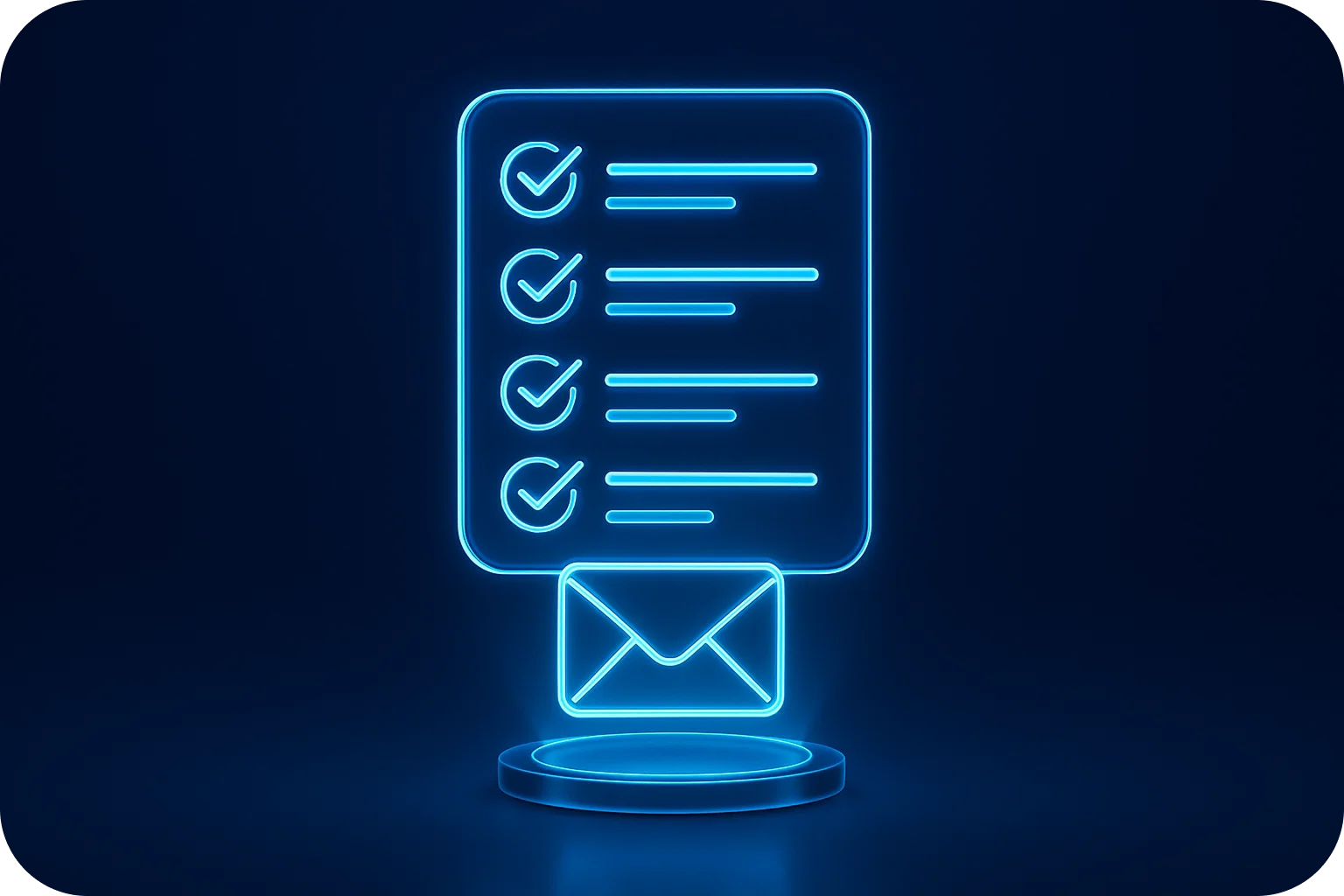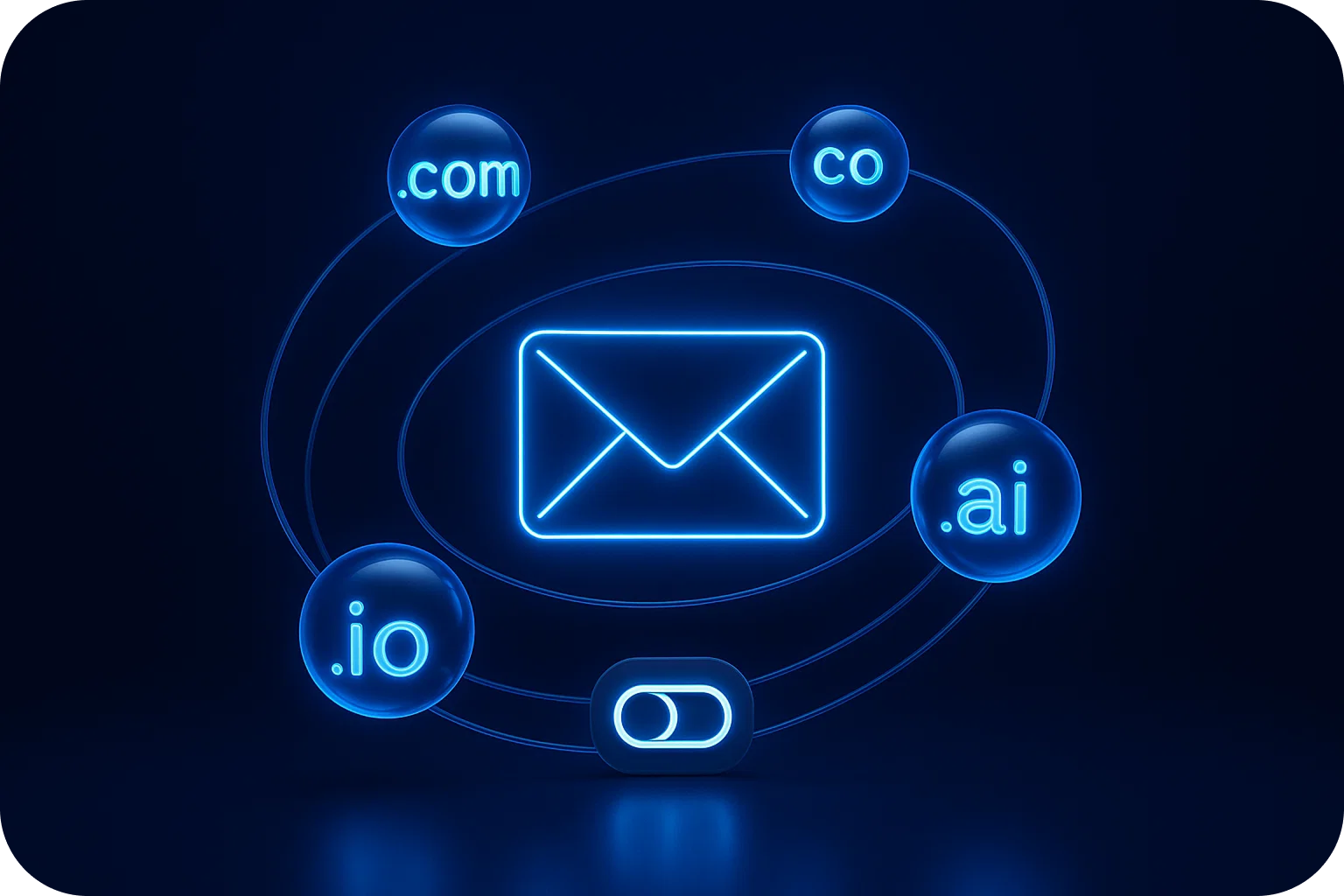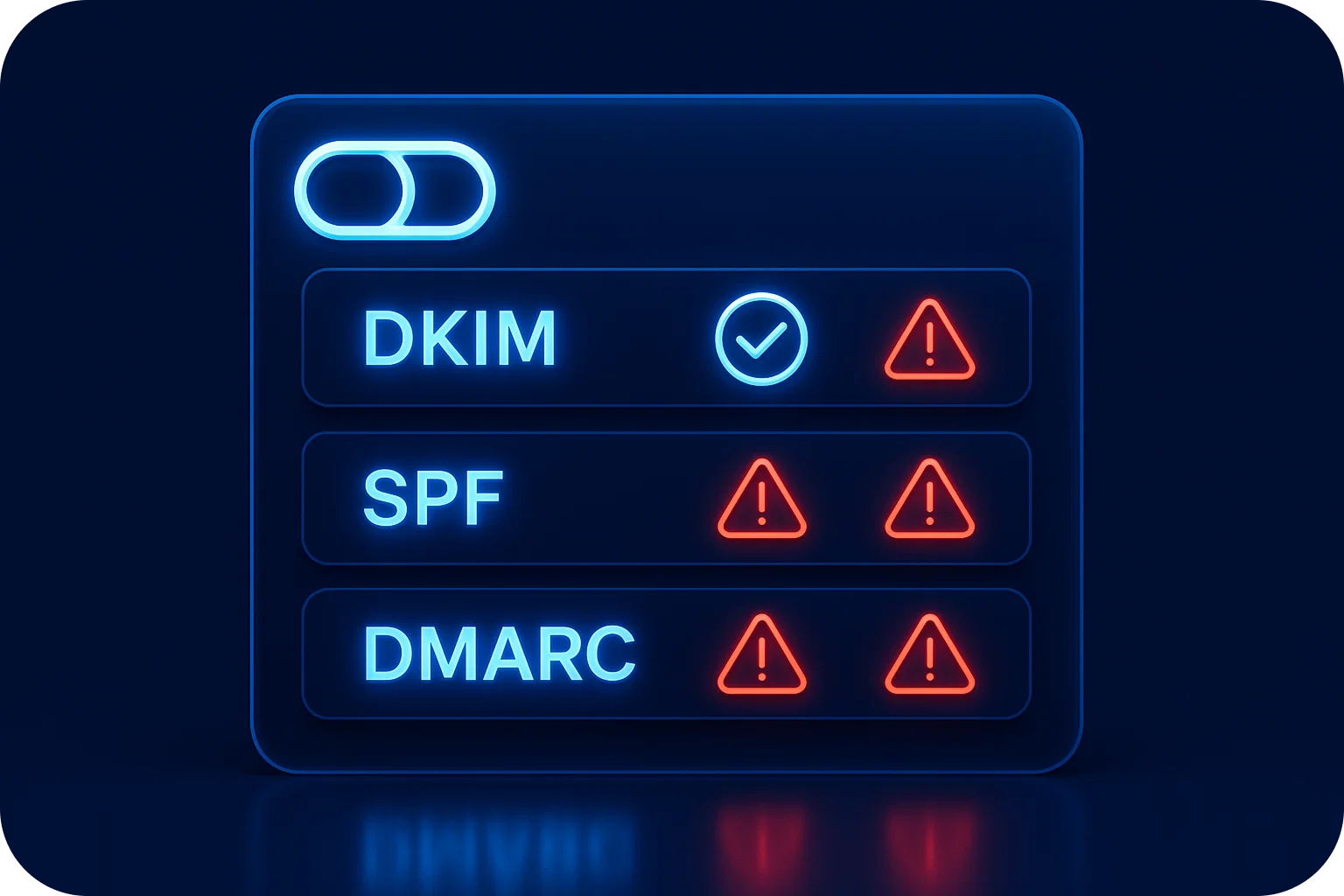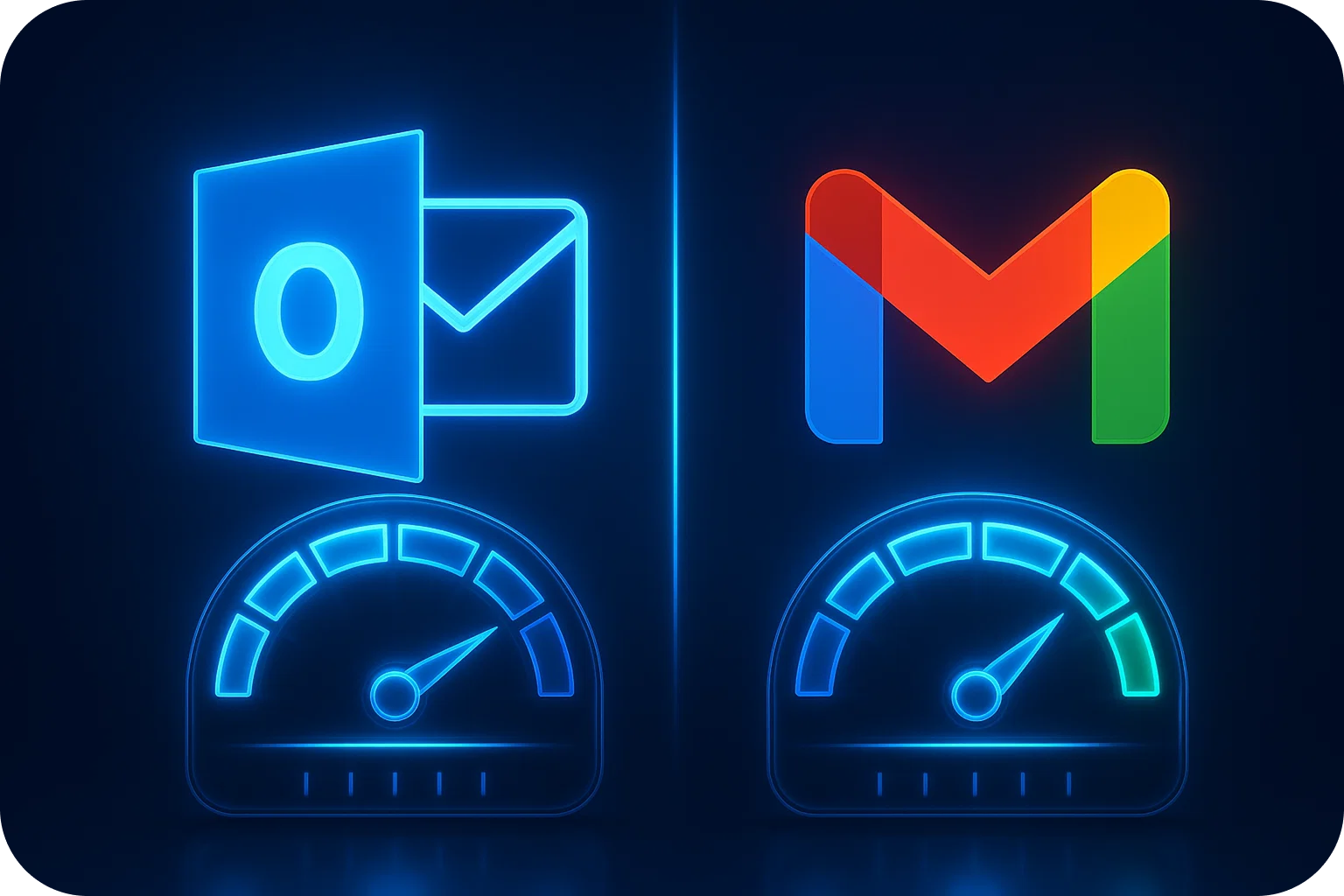Why Your Email Provider Is Sabotaging Your Sales Team's Success

Your sales team is working harder than ever. They're crafting personalized outreach, following up diligently, and hitting their activity metrics. Yet somehow, the replies aren't coming. The meetings aren't booked. And leadership is asking uncomfortable questions about ROI.
Here's the truth most sales leaders don't realize: the problem isn't your team's effort or your messaging. It's your email provider quietly sabotaging every campaign you send.
The Hidden Cost of "Good Enough" Email Infrastructure
Most companies approach cold email infrastructure the same way they approach office supplies, as a commodity. They sign up for a standard ESP, connect a few domains, and assume everything will work. After all, emails are being sent, so what could go wrong?
Everything, as it turns out.
Traditional email providers were designed for transactional emails and internal communication, not high-volume cold outreach. When your sales team scales up their prospecting efforts, these providers become bottlenecks that actively damage your sender reputation, limit your reach, and ultimately cost you deals.
Five Ways Your Email Provider Is Killing Your Sales Results
1. Shared IP Addresses Are Tanking Your Deliverability
When you send cold emails through a standard ESP, you're typically sharing IP addresses with hundreds or thousands of other senders. If even one of those senders engages in spammy behavior, and statistically, several will, your emails suffer the consequences.
Email providers like Gmail and Outlook don't evaluate your sender reputation in isolation. They look at the reputation of the entire IP address. One bad neighbor can drag down everyone's deliverability, sending your carefully crafted outreach straight to spam folders where prospects will never see it.
The result? Your sales team thinks they're reaching 1,000 prospects, but only 200 actually receive the email in their inbox. The other 800 never had a chance to respond, and your team has no idea why their conversion rates are abysmal.
2. Volume Limits Are Strangling Your Growth
Standard email providers impose strict sending limits often 500 emails per day per account. For a small team doing limited outreach, this might seem adequate. But the moment you try to scale, you hit a wall.
Want to reach 5,000 prospects this month? You'll need 10 email accounts. Planning a major campaign for a product launch? Better start setting up dozens of accounts weeks in advance. And each new account requires separate setup, warming, and management.
These artificial constraints don't just slow you down; they fundamentally limit your sales team's ability to execute on ambitious growth strategies. While your competitors are reaching thousands of prospects efficiently, you're stuck playing email account Tetris.
3. Poor Warm-Up Processes Are Destroying Your Sender Reputation
Here's a scenario that plays out in sales teams everywhere: You set up a new email account, immediately start sending 50 cold emails per day, and within a week, your deliverability plummets. Why? You skipped a proper email warm-up.
Most ESPs provide zero guidance on warming up new email accounts. They don't automate the process, they don't monitor your sender reputation, and they certainly don't alert you when you're about to trigger spam filters.
Email warm-up requires gradually increasing sending volume over 3-4 weeks while maintaining positive engagement signals. Miss this critical step, and you've permanently damaged that email account's reputation. Your sales team is now sending emails from an address that inbox providers have already flagged as suspicious.
4. DNS Configuration Nightmares Are Leaving You Vulnerable
Proper email deliverability requires correctly configured SPF, DKIM, and DMARC records. These DNS settings authenticate your emails and prove to receiving servers that you're a legitimate sender, not a spammer or phisher.
Standard email providers either provide minimal DNS guidance or make the configuration process unnecessarily complex. Sales teams without dedicated IT support often get these settings wrong or skip them entirely. The result is emails that fail authentication checks and land in spam, even when the content is legitimate.
Even worse, many teams don't realize their DNS is misconfigured until after they've sent thousands of emails into the void. By then, the damage to their sender reputation is already done.
5. Zero Visibility Means You're Flying Blind
Perhaps the most insidious problem with traditional email providers is the lack of deliverability visibility. Your ESP tells you how many emails were sent and how many bounced, but it doesn't tell you the metrics that actually matter:
- What percentage of your emails are landing in primary inboxes versus spam folders?
- How is your sender reputation trending across different email providers?
- Which domains or email accounts are experiencing deliverability issues?
- Are your authentication protocols properly configured and passing?
Without this visibility, your sales team operates on assumptions. They assume their emails are being delivered. They assume prospects are seeing their messages. They assume low response rates mean the messaging needs work, when the real problem is that prospects never received the email at all.
The Real Cost to Your Sales Team
These infrastructure problems don't just cause minor inconveniences; they have measurable, significant impacts on your sales results:
Wasted Sales Capacity: If only 60% of your emails are reaching primary inboxes, your sales team is effectively working at 60% capacity. The other 40% of their effort produces zero results, no matter how good their messaging or targeting.
Damaged Brand Reputation: When your emails consistently land in spam, email providers learn that recipients don't want to hear from you. This creates a negative feedback loop that becomes increasingly difficult to escape.
Missed Revenue Opportunities: Every email that lands in spam instead of an inbox is a potential deal that never materializes. For high-value B2B sales, even a handful of missed connections can represent hundreds of thousands in lost revenue.
Demoralized Sales Teams: Nothing kills sales morale faster than working hard with poor results. When reps send hundreds of emails with minimal responses, they start questioning their abilities when the real problem is the infrastructure they can't see or control.
What Modern Sales Teams Need Instead
The solution isn't working harder within a broken system. It's implementing email infrastructure specifically designed for cold outreach at scale. Here's what that looks like:
Purpose-Built Deliverability Management
Modern cold email infrastructure platforms focus obsessively on deliverability. They provide dedicated IPs or carefully managed shared IPs with strict sender reputation monitoring. They automate email warm-up processes and continuously monitor your sender reputation across all major email providers.
The result? Deliverability rates of 96-98% instead of 60-70%. Your emails actually reach the prospects you're targeting.
Scalable Infrastructure Without the Complexity
The right platform lets you scale from dozens to thousands of emails per day without manually managing dozens of accounts. You can add unlimited domains and email accounts, all properly configured and warmed up, ready to send within minutes instead of weeks.
This means your sales team can execute ambitious campaigns without infrastructure becoming a bottleneck. When you identify a hot market segment, you can reach them immediately, not after weeks of setup.
Automated DNS and Authentication
Specialized platforms handle SPF, DKIM, and DMARC configuration automatically. You don't need a technical background or dedicated IT support; the system ensures your authentication is properly configured from day one.
This eliminates a major source of deliverability problems and ensures your emails pass authentication checks that standard ESPs often fail.
Real-Time Deliverability Visibility
You can't improve what you can't measure. Modern cold email infrastructure provides detailed deliverability analytics, showing you exactly where your emails are landing, how your sender reputation is trending, and which accounts or domains need attention.
This visibility transforms email from a black box into a measurable, optimizable channel. Your sales team can make data-driven decisions about messaging, timing, and targeting based on actual deliverability data.
Enterprise-Grade Security and Compliance
As your outreach scales, security and compliance become critical. Purpose-built platforms offer enterprise-grade security, GDPR and CCPA compliance, and SOC2 certification, protections that standard ESPs often lack.
The Bottom Line: Infrastructure Is Your Competitive Advantage
In today's competitive B2B landscape, sales success increasingly comes down to execution efficiency. Two companies with similar products, similar messaging, and similar target markets can achieve radically different results based solely on their email infrastructure.
The company with 98% deliverability reaches 98 prospects for every 100 emails sent. The company with 65% deliverability reaches only 65. Over thousands of emails and dozens of campaigns, this difference compounds into millions in revenue.
Your sales team is already working hard. They're already crafting compelling messages and identifying qualified prospects. The question is: are you giving them the infrastructure they need to succeed, or are you sabotaging their efforts with email providers designed for a different purpose?
Taking Action: Audit Your Email Infrastructure
If you're experiencing any of these warning signs, it's time to audit your email infrastructure:
- Response rates below 2-3% on well-targeted campaigns
- Declining deliverability over time
- Inability to scale outreach without adding dozens of email accounts
- No visibility into inbox placement rates or sender reputation
- Manual DNS configuration that may or may not be correct
- Email accounts that perform well initially but degrade quickly
The good news? Switching to purpose-built cold email infrastructure is faster and easier than you think. Modern platforms offer 10-minute implementation, automated setup, and immediate deliverability improvements.
Your sales team's success shouldn't be held hostage by inadequate email infrastructure. Give them the tools they need to reach prospects, book meetings, and close deals without fighting their own technology every step of the way.
Because in the end, the best sales strategy in the world means nothing if your emails never reach their intended recipients.
More articles
Get started now




%201.png)
